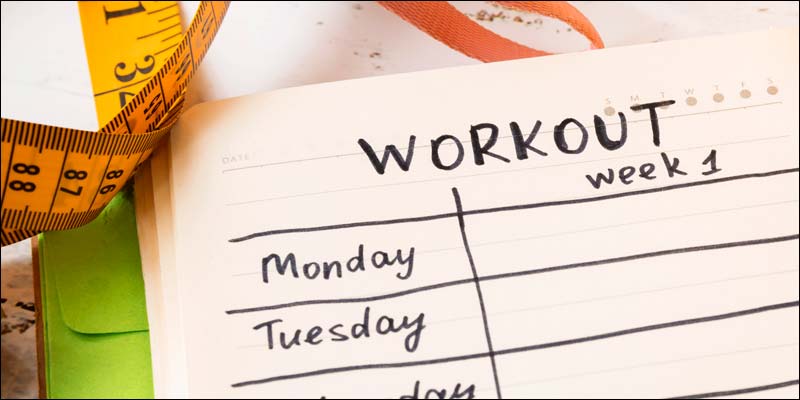In today’s fast-paced world, maintaining a healthy weight can be a challenge. Many people turn to various diets and exercise regimes to shed those extra pounds. While diet plays a crucial role in weight loss, exercise is equally important. This blog will guide you through the best weight loss exercise plan, ensuring you achieve your fitness goals efficiently and sustainably.
Why Exercise is Crucial for Weight Loss
Exercise not only helps you burn calories but also boosts your metabolism, improves your mood, and strengthens your cardiovascular system. When combined with a balanced diet, regular exercise can lead to significant weight loss and overall health improvement. Here’s why exercise should be an integral part of your weight loss journey:
Boosts Metabolism
Regular physical activity increases your metabolic rate, allowing you to burn more calories even at rest. This means you’ll lose weight faster and more efficiently.
Builds Muscle Mass
Engaging in strength training exercises helps build lean muscle mass. Muscle tissue burns more calories than fat tissue, even when you’re not exercising. This contributes to a higher basal metabolic rate.
Improves Mental Health
Exercise releases endorphins, which are natural mood lifters. This can help reduce stress, anxiety, and depression, making it easier to stick to your weight loss plan.
Enhances Cardiovascular Health
Cardiovascular exercises like running, cycling, and swimming strengthen your heart and lungs, improving overall cardiovascular health. A healthy heart is essential for sustained weight loss and well-being.
Types of Exercises for Weight Loss
A balanced exercise plan should include a mix of cardiovascular exercises, strength training, and flexibility exercises. Here’s a breakdown of the best types of exercises for weight loss:
Cardiovascular Exercises
Cardio workouts are great for burning calories and improving heart health. Some effective cardio exercises include:
- Running: A high-impact exercise that burns a significant number of calories.
- Cycling: A low-impact exercise that’s easy on the joints.
- Swimming: A full-body workout that’s great for toning muscles and burning calories.
- Jumping Rope: An excellent way to burn calories and improve coordination.
Strength Training
Strength training helps build muscle mass, which in turn boosts your metabolism. Effective strength training exercises include:
- Weightlifting: Increases muscle mass and strength.
- Bodyweight Exercises: Such as push-ups, squats, and lunges, which can be done anywhere.
- Resistance Band Exercises: Great for adding variety and resistance to your workouts.
High-Intensity Interval Training (HIIT)
HIIT workouts involve short bursts of intense exercise followed by rest periods. These workouts are highly effective for burning calories and improving cardiovascular fitness. Examples include:
- Sprint Intervals: Alternating between sprinting and walking.
- Circuit Training: Combining different exercises like jumping jacks, burpees, and push-ups in quick succession.
Flexibility and Balance Exercises
Flexibility exercises improve your range of motion and prevent injuries, while balance exercises enhance stability. Some beneficial exercises include:
- Yoga: Enhances flexibility, strength, and mindfulness.
- Pilates: Focuses on core strength, flexibility, and overall body conditioning.
Create Your Weight Loss Exercise Plan

Creating an effective weight loss exercise plan involves combining various types of exercises to target different aspects of fitness. Here’s a step-by-step guide to designing your plan:
Assess Your Fitness Level
Before starting, assess your current fitness level. This will help you tailor the exercises to your abilities and avoid injury.
Choose a Variety of Exercises
Incorporate a mix of cardiovascular, strength training, HIIT, and flexibility exercises into your weekly routine. This variety will keep your workouts interesting and effective.
Set a Weekly Schedule
Plan your workouts for the week, ensuring you allocate time for each type of exercise. A sample weekly schedule might look like this:
- Monday: 30 minutes of running (cardio)
- Tuesday: 45 minutes of weightlifting (strength training)
- Wednesday: 30 minutes of swimming (cardio)
- Thursday: 30 minutes of HIIT
- Friday: 45 minutes of yoga (flexibility)
- Saturday: 30 minutes of cycling (cardio)
- Sunday: Rest or light stretching
Warm-Up and Cool Down
Always start with a warm-up to prepare your body for exercise and reduce the risk of injury. A cool-down session after your workout helps your body recover and prevents muscle soreness.
Stay Consistent
Consistency is key to achieving your weight loss goals. Stick to your exercise plan, but also listen to your body and take rest days when needed.
Weight Loss Exercise Plan: Nutrition and Hydration

Exercise alone is not enough for weight loss; nutrition and hydration play a critical role. Here are some tips to complement your exercise plan:
Balanced Diet
Eat a diet rich in whole foods, including fruits, vegetables, lean proteins, and whole grains. Avoid processed foods and sugary drinks.
Portion Control
Be mindful of portion sizes to avoid overeating. Eating smaller, frequent meals can help regulate your metabolism and keep you energized.
Stay Hydrated
Drink plenty of water throughout the day, especially before, during, and after workouts. Proper hydration is essential for optimal performance and recovery.
Monitor Macronutrients
Ensure you’re getting the right balance of carbohydrates, proteins, and fats to fuel your workouts and support muscle recovery.
Common Mistakes to Avoid
Many people make mistakes that hinder their weight loss progress. Here are some common pitfalls and how to avoid them:
Skipping Warm-Ups and Cool-Downs
Neglecting warm-ups and cool-downs can lead to injuries and prolonged muscle soreness. Always take a few minutes to prepare your body for exercise and to recover afterward.
Overtraining
While consistency is important, overtraining can lead to burnout and injuries. Make sure to incorporate rest days into your schedule to allow your body to recover.
Ignoring Strength Training
Some people focus solely on cardio exercises and neglect strength training. Remember, building muscle is essential for boosting metabolism and achieving long-term weight loss.
Unrealistic Expectations
Expecting rapid results can lead to frustration. Weight loss is a gradual process, and it’s important to celebrate small victories along the way.
Weight Loss Exercise Plan: Staying Motivated
Maintaining motivation is crucial for long-term success. Here are some strategies to keep you motivated:
Find a Workout Buddy
Exercising with a friend can make workouts more enjoyable and hold you accountable.
Set Mini-Goals
Break your weight loss journey into smaller, manageable goals. Achieving these mini-goals can provide a sense of accomplishment and keep you motivated.
Reward Yourself
Treat yourself to non-food rewards, such as a new workout outfit or a relaxing massage, when you reach a milestone.
Mix Up Your Routine
Variety is the spice of life. Keep your workouts interesting by trying new exercises or changing your routine periodically.
Conclusion
Creating and sticking to a weight loss exercise plan can be challenging, but with the right approach, it is entirely achievable. By incorporating a mix of cardiovascular, strength training, HIIT, and flexibility exercises, and combining them with a balanced diet and proper hydration, you can achieve your weight loss goals and improve your overall health. Remember to set realistic goals, stay consistent, and avoid common mistakes. Most importantly, find ways to stay motivated and make your fitness journey enjoyable. Here’s to a healthier, fitter you!

